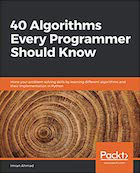| Practical tactics to grow your willpower! | |

|
Finish What You Start |
Back when I was interviewing for computer programming positions in Boulder and Louisville, Colorado, I found that many interviewers ask questions about Java serialization. After being asked about serialization for the third time, I remembered an old Java deep clone hack that takes advantage of serialization.
The basic idea is:
- You have a Java object, and you want to make a complete clone (copy) of it.
- By marking your classes as being Serializable, you can write them out as an object stream, then read them back in as a different object.
- When you read the object back in as a different object, this creates a deep clone of your original object.
A Java “deep clone” method
Getting right to the solution, the following method will let you make a deep clone of a Java object:
/**
* This method makes a "deep clone" of any Java object it is given.
* @author Alvin Alexander, https://alvinalexander.com
*/
public static Object deepClone(Object object) {
try {
ByteArrayOutputStream baos = new ByteArrayOutputStream();
ObjectOutputStream oos = new ObjectOutputStream(baos);
oos.writeObject(object);
ByteArrayInputStream bais = new ByteArrayInputStream(baos.toByteArray());
ObjectInputStream ois = new ObjectInputStream(bais);
return ois.readObject();
}
catch (Exception e) {
e.printStackTrace();
return null;
}
}
As you’ll see in the following example, you can call this method something like this:
// (1) create a Person object named Al
Address address = new Address("101 Fern Avenue", "Palmer", "Alaska");
Person al = new Person("Al", "Alexander", address);
// (2) make a deep clone of Al
Person neighbor = (Person)deepClone(al);
In this code, the neighbor object is a deep clone of the al object.
A complete deep clone example
If you’re in a hurry, I hope that code gave you what you need. But if it helps to see a complete “deep clone” example, here’s some Java source code that completely demonstrates this technique:
import java.io.*;
/**
* Demonstrates a technique (a hack) to create a "deep clone"
* in a Java application.
* @author Alvin Alexander, https://alvinalexander.com
*/
public class JavaDeepClone {
public static void main(String[] args) {
// (1) create a Person object named Al
Address address = new Address("101 Fern Avenue", "Palmer", "Alaska");
Person al = new Person("Al", "Alexander", address);
// (2) make a deep clone of Al
Person neighbor = (Person)deepClone(al);
// (3) modify the neighbor's attributes
neighbor.firstName = "Martha";
neighbor.lastName = "Stewart";
// (4) show that it all worked
System.out.print(neighbor);
}
/**
* This method makes a "deep clone" of any object it is given.
*/
public static Object deepClone(Object object) {
try {
ByteArrayOutputStream baos = new ByteArrayOutputStream();
ObjectOutputStream oos = new ObjectOutputStream(baos);
oos.writeObject(object);
ByteArrayInputStream bais = new ByteArrayInputStream(baos.toByteArray());
ObjectInputStream ois = new ObjectInputStream(bais);
return ois.readObject();
}
catch (Exception e) {
e.printStackTrace();
return null;
}
}
}
/**
* These classes implement Serializable so we can write them out and
* read them back in as a stream of bytes.
*/
class Person implements Serializable {
String firstName, lastName;
Address address;
public Person(String firstName, String lastName, Address address) {
this.firstName = firstName;
this.lastName = lastName;
this.address = address;
}
public String toString() {
StringBuilder sb = new StringBuilder();
sb.append("First Name: " + firstName + "\n");
sb.append("Last Name: " + lastName + "\n");
sb.append("Street: " + address.street + "\n");
return sb.toString();
}
}
class Address implements Serializable {
String street, city, state;
public Address(String street, String city, String state) {
this.street = street;
this.city = city;
this.state = state;
}
}
I tried to document the Java source code pretty well, so I won’t describe it in any further detail here, other than to add these comments:
- I didn’t create the
PersonandAddressclasses as Java beans, but only because I was trying to make this example as short as possible. - As you can see, the
deepClonemethod does all the magic of making a copy/clone of your original object.
| Algorithms! | |

|
40 Algorithms Every Programmer Should Know |
Summary: My Java deep clone example
As shown, this serialization technique/hack lets you easily make a deep clone of a Java object.
As far as I know, the only drawback to this technique is that it requires you to have your classes implement the Java Serializable interface, which is considered a “marker” interface, because it does not define any methods.
As a final note, I haven’t had the need to use this technique in a long time, so there may be better ways of doing this these days. But I can say that this technique worked well back in the day.



